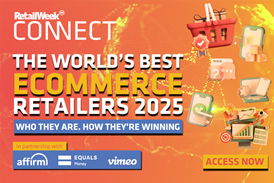NRF 2022: Nordstrom exec pledges to make Asos a 'big deal' for the US consumer

Nordstrom president and chief brand officer Peter Nordstrom said that Asos’ concession in the famous American chain could be the silver bullet it needs to be front of mind for US shoppers.
Nordstrom has made a number of strategic partnerships over the last few years.
Already have an account? Sign in here



















